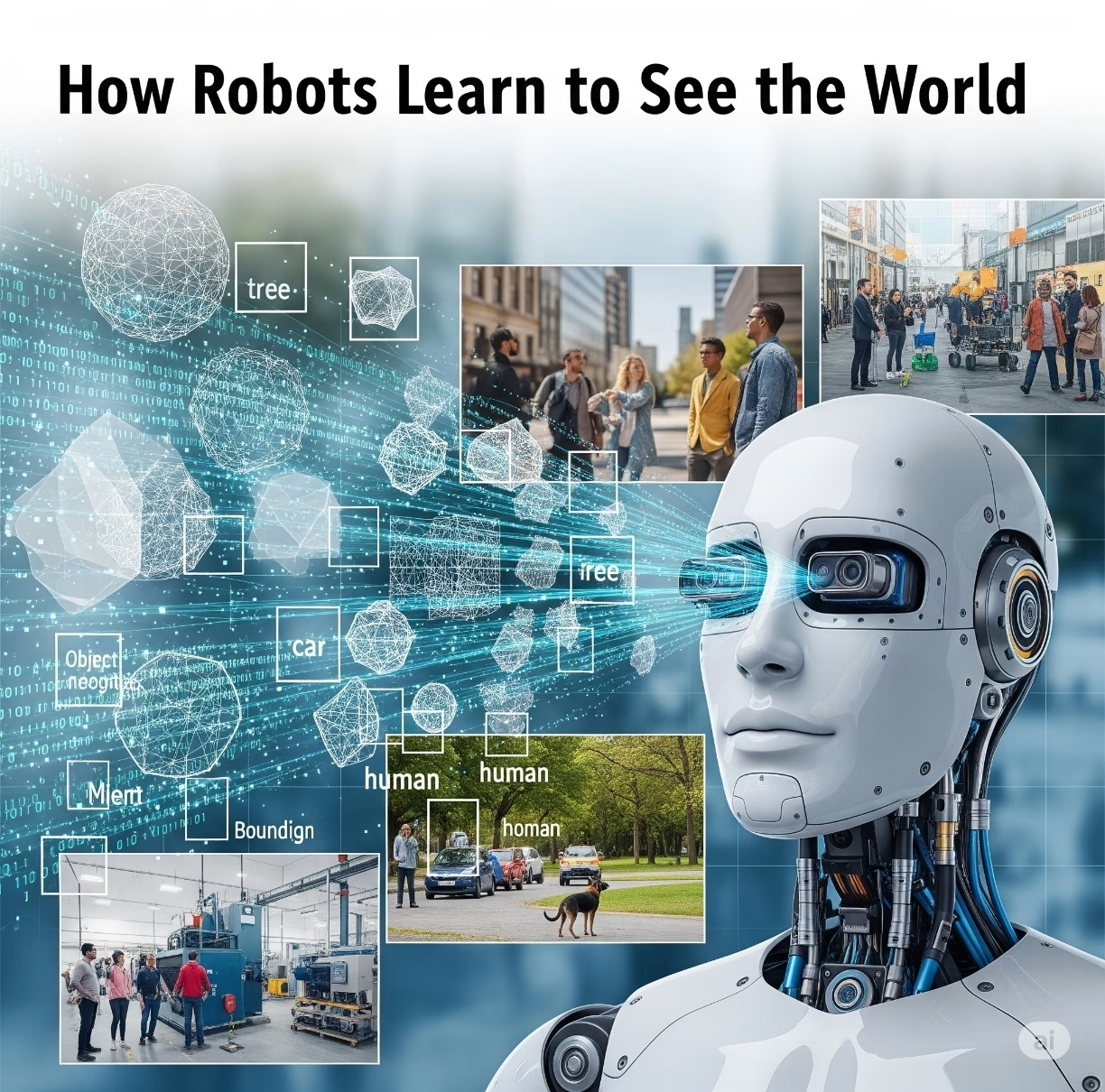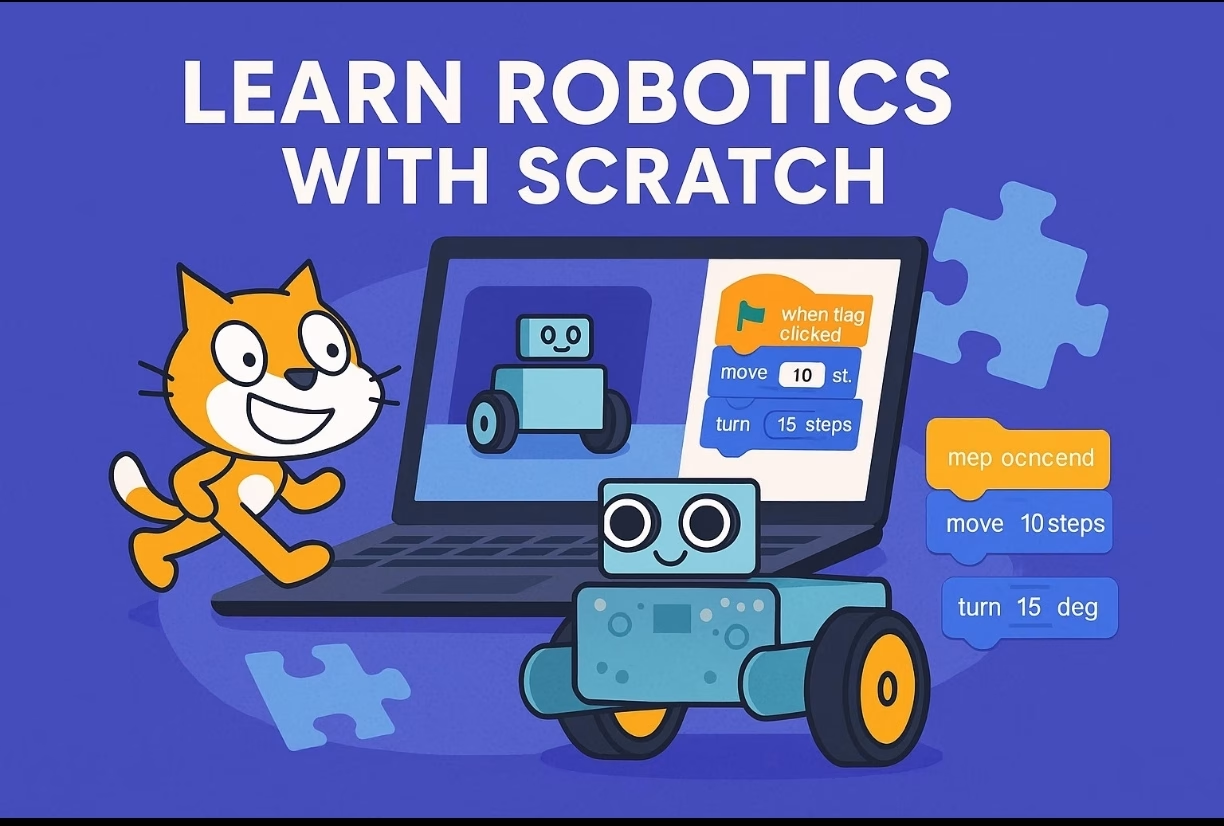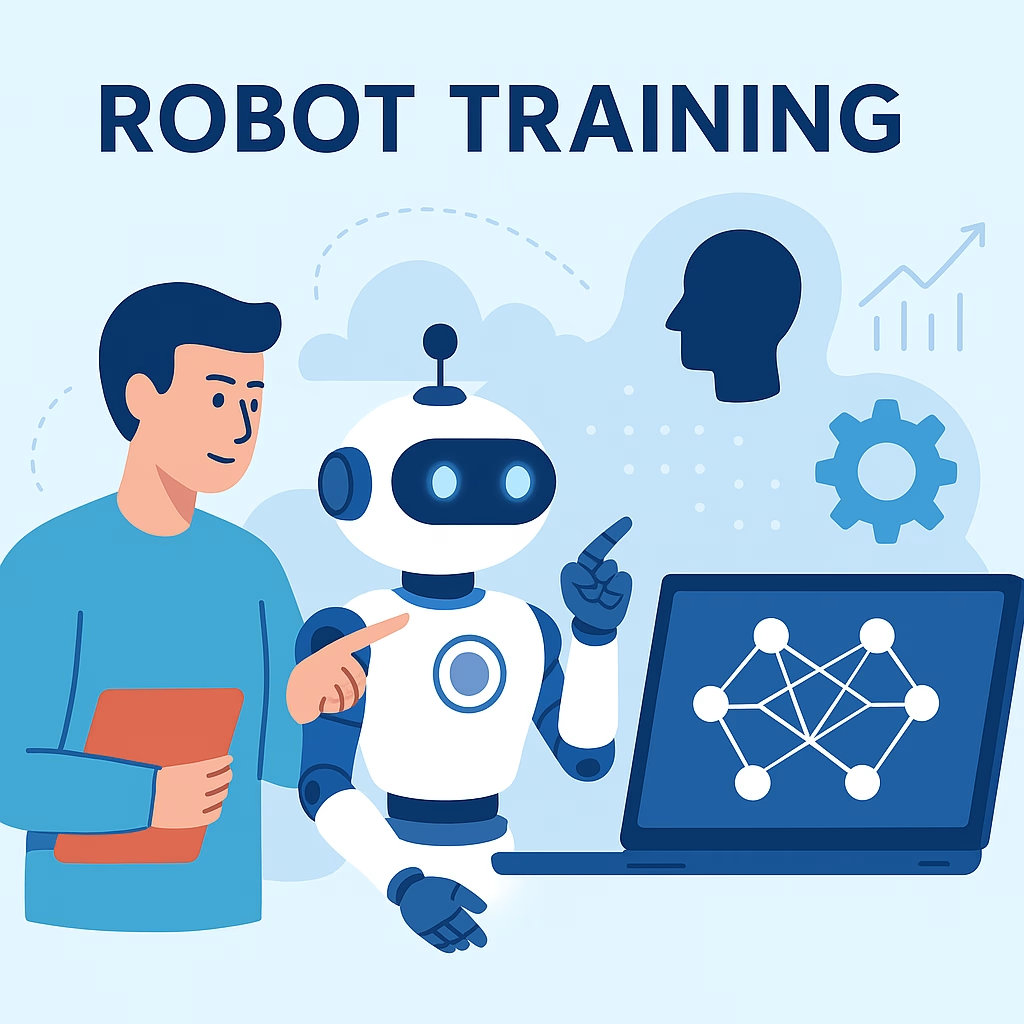Introduction to Robot Vision
Robot vision is the ability of a robot to interpret and understand visual information from its environment using cameras and sensors. It is one of the most essential parts of modern robotics, enabling robots to perform tasks like object recognition, obstacle avoidance, path planning, and interaction with humans.
🔍 What Is Robot Vision?
Robot vision combines image processing, computer vision, and artificial intelligence to help robots “see” the world. Unlike simple sensors that detect only distance or light, robot vision allows machines to analyze detailed features like shape, size, color, and motion.
Some examples include:
- A robot arm locating an object on a conveyor belt.
- A delivery robot navigating a sidewalk without bumping into people.
- A humanoid robot recognizing a human face and reacting accordingly.
🧠 How Does It Work?
Robot vision generally involves these steps:
- Image Capture: Using one or more cameras (monocular or stereo).
- Image Processing: Converting raw images into usable data (removing noise, sharpening, etc.).
- Object Detection: Identifying shapes, colors, and objects using AI models.
- Decision Making: Based on the visual input, the robot takes action (e.g., move, stop, pick up an object).
Technologies used:
- OpenCV (for image processing)
- Deep learning models (like YOLO or MobileNet for real-time detection)
- SLAM (Simultaneous Localization and Mapping)
🛠️ Applications of Robot Vision
- Industrial Robots: For quality control and sorting.
- Autonomous Vehicles: For lane detection and traffic sign recognition.
- Healthcare Robots: To assist surgeons with visual feedback.
- Agricultural Drones: To identify crop health and optimize farming.
🚀 Getting Started with Robot Vision
You can begin experimenting with robot vision using tools like:
- Raspberry Pi Camera or USB Webcam
- Python + OpenCV (popular for image processing tasks)
- Simple projects like color object tracking or motion detection.
Example Python snippet for detecting a red object:
import cv2
cap = cv2.VideoCapture(0)
while True:
ret, frame = cap.read()
hsv = cv2.cvtColor(frame, cv2.COLOR_BGR2HSV)
lower_red = (0, 120, 70)
upper_red = (10, 255, 255)
mask = cv2.inRange(hsv, lower_red, upper_red)
result = cv2.bitwise_and(frame, frame, mask=mask)
cv2.imshow('Red Object Detection', result)
if cv2.waitKey(1) & 0xFF == ord('q'):
break
cap.release()
cv2.destroyAllWindows()
🧩 Final Thoughts
Robot vision is a powerful skill that bridges coding, hardware, and AI. If you’re interested in building robots that can interact with the world, mastering robot vision is a great step forward.
Share your thoughts in the comments and join the discussion on ROBOFORUM – the community for future-minded thinkers in robotics and AI!
Leave a comment and join the discussion. If you’re not already subscribed, please subscribe or log in.









